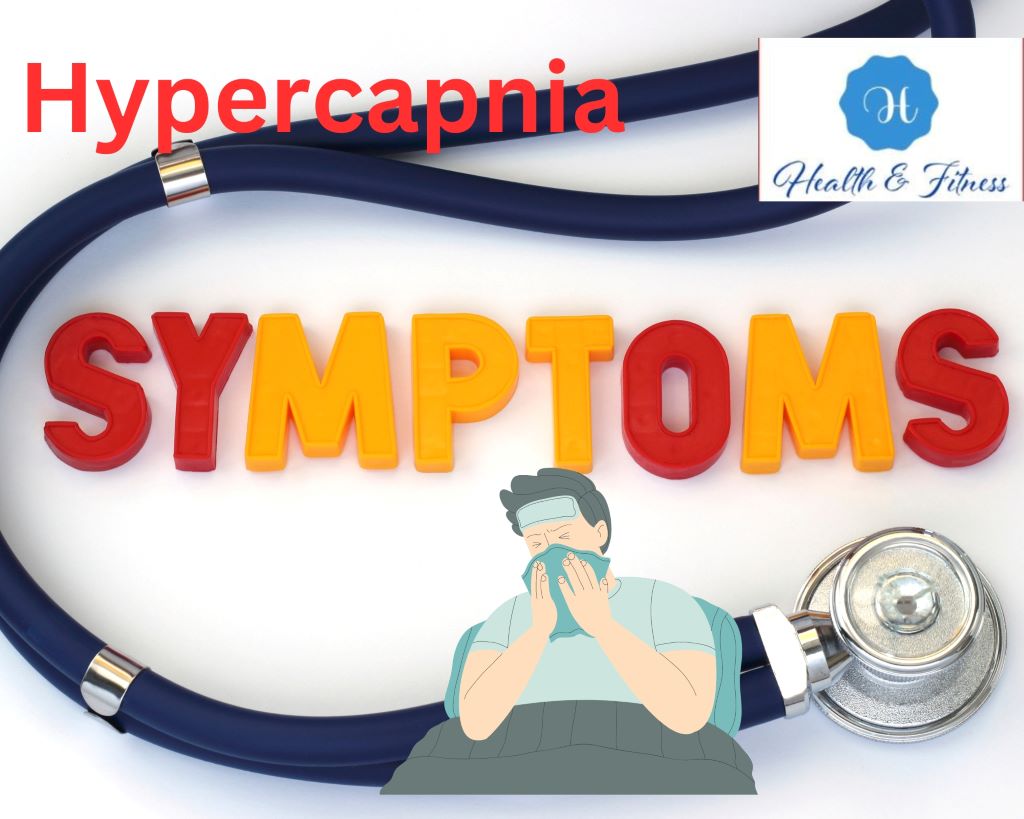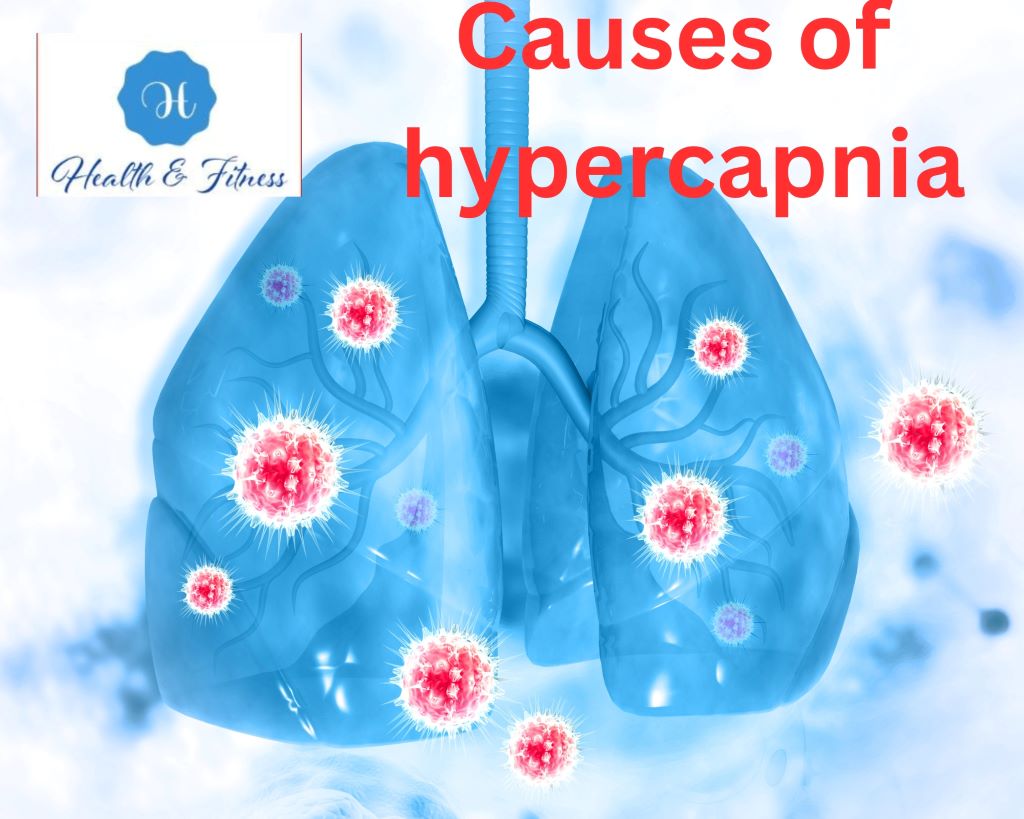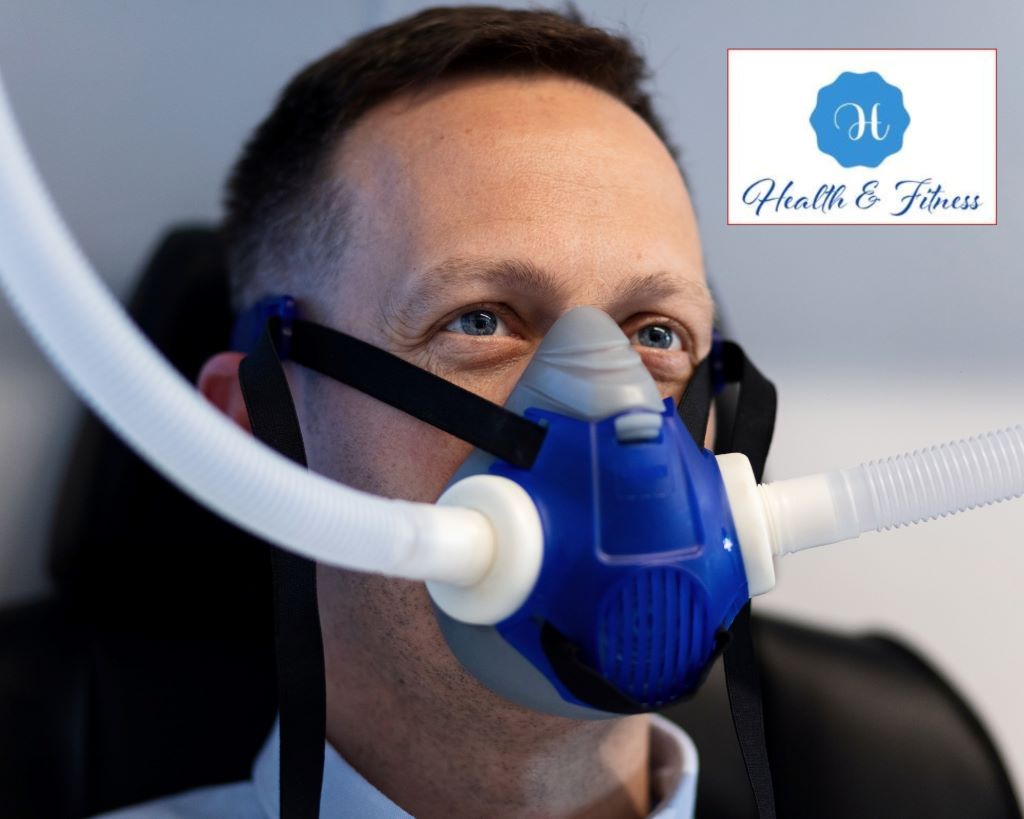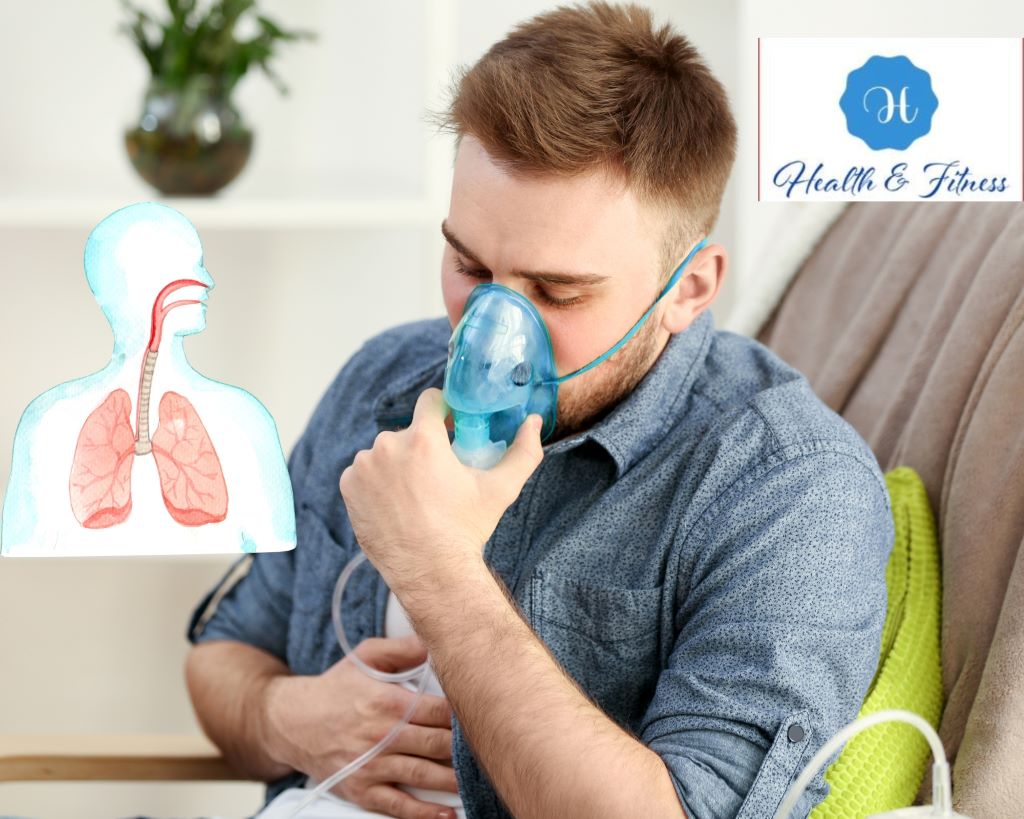Hypercapnia and Respiratory Diseases: The Lung Disease Link
Hypercapnia is a medical condition that occurs when excess carbon dioxide is in the bloodstream. Various factors, including lung disease, obesity, and sleep apnea, cause this condition. Hypercapnia can cause serious health problems, such as respiratory failure and even death, when left untreated. We will explore the link between hypercapnia and lung disease. We will discuss how respiratory illnesses, by impeding gas exchange, COPD, asthma, and pneumonia, can cause Hypercarbia.
We will also outline the diagnostic process and various treatment options for hypercapnia in lung disease patients and provide tips for preventing Hypercarbia in those with lung disease. Understanding the connection between hypercapnia and lung disease can help better prevent and manage this potentially dangerous condition.
Symptoms of hypercapnia

It’s important to note that these symptoms can vary in severity depending on the underlying cause of Hypercarbia and the patient’s overall health. If a person with lung disease has any of these symptoms, he or she should immediately see a doctor. If left untreated, Hypercarbia can be life-threatening. Some common mild signs of hypercapnia are:
1- Shortness of breath or difficulty breathing:
As carbon dioxide levels in the body rise, it can become more challenging to live, and patients may experience shortness of breath or a feeling of suffocation.
2- Headache:
Hypercapnia can cause headaches or feelings of pressure in the head, which may be accompanied by dizziness or confusion.
3- Flushed skin:
As carbon dioxide levels rise, blood vessels in the skin may dilate, causing the skin to appear flushed or reddened.
4- Fatigue or weakness:
Hypercapnia can cause fatigue or weakness as the body works harder to breathe, and oxygen delivery to tissues may be impaired.
5- Confusion or altered mental status:
In severe cases, hypercapnia can cause confusion, disorientation, or even loss of consciousness.
6- Rapid heart rate:
As the body tries to compensate for the increased carbon dioxide levels, the heart may beat faster to deliver oxygen to tissues.
7- Tremors or muscle twitching:
In some cases, hypercapnia can cause muscle twitching or tremors, particularly in the hands or feet.
Severe symptoms of hypercapnia
Patients with lung disease need to be aware of these severe symptoms and seek medical attention immediately if they experience any of them. Sometimes, hospitalization and intensive treatment may be necessary to manage hypercapnia and prevent complications. That may require immediate medical attention:
1- Cyanosis
Are bluish skin, lips, and nail discoloration caused by a lack of oxygen? It can occur in severe cases of hypercapnia when the body cannot deliver enough oxygen to tissues.
2- Coma:
Hypercarbia can cause unconsciousness or coma in very severe cases.
3- Seizures:
Hypercapnia can cause sudden seizures and uncontrolled body movements in rare cases.
4- Arrhythmias:
As the body tries to compensate for the increased carbon dioxide levels, the heart may beat irregularly or faster than usual, leading to arrhythmias or even heart failure.
5- Respiratory failure:
Hypercapnia can cause respiratory failure, which occurs when the body cannot get enough oxygen and expel enough carbon dioxide, leading to low oxygen levels in the blood.
The Physiology of Hypercapnia
Understand the body’s normal carbon dioxide removal process to comprehend hypercapnia. Oxygen enters the circulation through our lungs when we breathe. Our tissues use oxygen to generate energy. The bloodstream carries carbon dioxide from this mechanism to the lungs. Exhalation removes CO2 from the body.
Gas exchange—exchanging oxygen and carbon dioxide—is essential for blood gas equilibrium. Respiratory acidosis occurs when the body cannot adequately remove carbon dioxide. Lung illness, sleep apnea, and obesity can cause this. Inflammation or injury in lung illnesses like COPD or asthma may prevent gas exchange. Sleep apnea interrupts breathing, raising carbon dioxide levels. Obesity can strain the lungs, making breathing difficult. Understanding hypercapnia’s physiology helps diagnose and treat the illness.
Causes of hypercapnia

It’s essential for patients with lung disease or other risk factors to be aware of these potential causes and to seek medical attention if they experience any symptoms of hypercapnia. Treatment of hypercapnia depends on the underlying cause and severity of the condition. Here are some common causes of hypercapnia:
1-Lung disease:
Hypercapnia is often associated with lung diseases that affect the exchange of gases between the lungs and the bloodstream; chronic obstructive pulmonary disease (COPD), asthma, and pneumonia are some examples. In these conditions, the lungs may not expel enough carbon dioxide, leading to hypercapnia.
2- Sleep apnea:
This is a condition in which breathing is interrupted during sleep, causing blood to become depleted of oxygen and saturated with carbon dioxide.
3- Obesity:
Obesity can increase the risk of hypercapnia, as excess body fat can compress the lungs and make breathing harder.
4- Drug overdose:
Certain medications, such as opioids or sedatives, can depress the respiratory system and lead to hypercapnia if taken in large amounts.
5- Neuromuscular disorders:
Conditions that affect the nerves or muscles involved in breathing, such as muscular dystrophy or amyotrophic lateral sclerosis (ALS), can lead to hypercapnia.
6- Trauma or injury:
Chest trauma, spinal cord injury, or other types of trauma can affect breathing and lead to hypercapnia.
7- Environmental factors:
Toxic quantities of carbon dioxide in the air, such as enclosed spaces or underground mines, can also cause hypercapnia.
The Link Between Hypercapnia and Lung Disease
COPD, asthma, and pneumonia patients often have hypercapnia. These patients’ hypercapnia indicates impaired lung function. COPD affects millions globally. It causes breathing problems and lung damage. COPD patients with hypercapnia cannot expel carbon dioxide from their blood.
Carbon dioxide levels rise, causing shortness of breath, weariness, and confusion. Severe asthma can cause hypercapnia. Airway inflammation causes asthma, making breathing difficult. Hypercapnia can result from acute inflammation, impairing gas exchange. Hypercapnia can result from pneumonia.
Pneumonia can cause abrupt respiratory failure, where the lungs can’t get enough oxygen. Hence, blood carbon dioxide levels rise, causing hypercapnia. Lung illness impairs gas exchange, causing hypercapnia. If you suspect a respiratory ailment, see a doctor. Lung disease patients’ hypercapnia diagnosis and treatment will be covered next.
Diagnosing and Treating Hypercapnia in Lung Disease Patients
Physical exams, blood testing, and pulmonary function tests are used to diagnose hypercapnia in lung disease patients. A physical exam may include listening to the patient’s breathing, testing oxygen saturation, and assessing respiratory function. Carbon dioxide and oxygen levels can be measured in blood. Spirometry or arterial blood gas analysis may be done to assess lung function and gas exchange. The cause and severity of hypercapnia will determine therapy options.
Treating lung illness with drugs or lifestyle changes may be the focus in certain circumstances. More intensive treatment may be needed for severe Hypercarbia. Oxygen therapy is a frequent treatment that boosts blood oxygen levels and lowers carbon dioxide levels. Open airways and improve breathing with bronchodilators. In difficult situations, mechanical ventilation may be needed. This uses a machine to help the patient breathe and exchange gas. Mechanical ventilation can be administered via a mask or a windpipe tube.
Avoiding Hypercarbia in lung disease patients is very crucial. This can be achieved by stopping smoking, maintaining a healthy weight, and managing other health concerns. To minimize problems and improve their quality of life, lung disease patients should cooperate with a healthcare provider to address hypercapnia.
Who’s at risk of hypercapnia?
Several factors can increase a person’s risk of developing Hypercarbia.
Here are some groups of people who may be at higher risk:
1- People with lung disease:
Chronic obstructive pulmonary disease (COPD), asthma, and pneumonia increase Hypercarbia risk.
2- People with sleep apnea:
This is a condition in which breathing is interrupted during sleep, causing an imbalance between the body’s oxygen and carbon dioxide levels.
3- Obese individuals:
Obesity can increase the risk of hypercapnia, as excess body fat can compress the lungs and make breathing harder.
4- Individuals with neuromuscular disorders:
Conditions that affect the nerves or muscles involved in breathing, such as muscular dystrophy or amyotrophic lateral sclerosis (ALS), can lead to hypercapnia.
5- Individuals taking certain medications:
Some medications, such as opioids or sedatives, can depress the respiratory system and lead to Hypercarbia if taken in large amounts.
6- People exposed to high levels of carbon dioxide:
When the environment has a lot of carbon dioxide, such as in enclosed spaces or underground mines, it can also increase the risk of Hypercarbia. It’s essential for individuals with these risk factors to be aware of the signs and symptoms of Hypercarbia and to seek medical attention if they experience any symptoms. Regular check-ups with a healthcare provider can also help monitor high-risk individuals’ lung function and carbon dioxide levels.
Treatment of hypercapnia

Treatment of Hypercarbia depends on the severity of the condition and the underlying cause. Here are some standard treatment options for Hypercarbia:
1-Oxygen therapy:
Administering oxygen through a mask or nasal cannula can help increase oxygen levels in the blood and reduce carbon dioxide levels.
2- Bronchodilators:
These medications help relax the airways, making breathing easier and reducing the risk of carbon dioxide buildup. They are commonly used to treat lung diseases such as asthma and COPD.
3- Mechanical ventilation:
In severe cases of hypercapnia, mechanical ventilation may be necessary to help support breathing. This involves using a machine to assist with breathing or taking over breathing entirely.
4- Medications to treat the underlying cause:
For example, antibiotics may be prescribed to treat pneumonia, or corticosteroids may be used to reduce inflammation in the airways in individuals with COPD.
5- Pulmonary rehabilitation:
This program helps people with lung disease improve their lung function and lower their risk of Carbon dioxide retention through exercise, breathing techniques, and education. It’s important to note that treatment for Hypercarbia should always be supervised by a healthcare professional. Treatment may also involve addressing underlying lifestyle factors that contribute to the development of Hypercarbia, such as smoking or obesity.
Preventing Hypercapnia in Lung Disease Patients
While treatment options are available for Hypercarbia in lung disease patients, prevention is always the best course of action. Here are some tips to help prevent hypercapnia in patients with lung disease:
1- Quit smoking:
Smoking is one of the leading cause of lung disease and can worsen existing lung conditions. Cigarette smoke contains harmful chemicals that can damage the airways and make breathing harder. Quitting smoking is one of the most effective ways to prevent further lung damage and reduce the risk of Carbon dioxide retention. Many resources are available to help patients quit smoking, such as nicotine replacement therapy, counselling, and support groups.
2- Manage weight:
Obesity is a risk factor for lung disease, as excess weight can strain the lungs and make breathing harder. In addition, obesity can contribute to the development of other health conditions, such as sleep apnea, which can increase the risk of hypercapnia. Patients should work with their healthcare provider to develop a healthy diet and exercise plan tailored to their needs and medical history.
3- Exercise regularly:
Exercising regularly can assist in increasing lung capacity and decreasing hypercapnia. Patients with lung disease should aim for at least 30 minutes of moderate-intensity exercise, such as brisk walking or cycling, most days of the week. However, it is essential to work with a healthcare provider to develop a safe and appropriate exercise plan for their needs. Some types of exercise may be more challenging for patients with certain lung conditions.
4- Avoid triggers:
Patients with lung disease should be aware of stimuli that can worsen their symptoms and increase the risk of hypercapnia. This may include avoiding exposure to air pollution, allergens, and other environmental irritants. Patients may also need to change their home or work environment, such as installing air filters or using protective equipment, to reduce their exposure to these triggers.
5- Obtain regular check-ups:
Regular check-ups with a healthcare provider are essential for monitoring lung function and carbon dioxide levels.
Patients should work closely with their healthcare provider to develop a personalized treatment plan that meets their needs. This may include regular pulmonary function tests, blood tests, and imaging studies to monitor lung function and detect changes in carbon dioxide levels. Patients should also be aware of new or worsening symptoms and report them to their healthcare provider immediately.
6- Practice proper medication management:
Many medications used to treat lung disease, such as corticosteroids and beta-agonists, can affect carbon dioxide levels in the body. Patients should work with their healthcare provider to develop a medication management plan that considers their individual needs and any potential side effects. It’s essential to follow medication instructions carefully and never stop or adjust medication without consulting a healthcare provider.
7- Manage stress:
Stress can exacerbate lung disease symptoms and increase the risk of hypercapnia. Patients with lung disease should manage stress, such as practicing relaxation techniques like deep breathing or meditation, staying organized and prioritizing tasks, and seeking support from loved ones or mental health professionals as needed.
8- Consider pulmonary rehabilitation:
Pulmonary rehabilitation is a comprehensive program that combines exercise, education, and support to help patients with lung disease manage their symptoms and improve their quality of life. Patients with chronic obstructive pulmonary disease (COPD) and other long-term lung diseases can benefit from pulmonary rehabilitation because it can improve lung function and lower the risk of complications like Hypercarbia.
Patients should talk to their doctor or nurse to determine if pulmonary rehabilitation benefits them. By following these tips and working closely with a healthcare provider, lung disease patients can control their respiratory health and reduce the risk of Hypercarbia.
While Hypercarbia can be a severe complication, it’s important to remember that effective treatments and prevention strategies are available to help patients maintain their lung function and overall health.
Conclusion
Lung illness patients with inefficient carbon dioxide elimination might develop hypercapnia, a dangerous condition. Symptoms and life-threatening consequences can result. Lung disease patients should know the risk factors for Hypercarbia and prevent it, such as quitting smoking, managing weight, exercising, managing medications, and managing stress.
Oxygen, bronchodilators, and mechanical ventilation can cure Hypercarbia. Lung function and carbon dioxide levels need regular doctor visits. Lung disease patients can improve their quality of life and lessen consequences by recognizing Hypercarbia and lung illness and proactively preventing and treating it.
Reference
Hypercapnia” published by the National Center for Biotechnology Information: https://www.ncbi.nlm.nih.gov/books/NBK482456/
“Management of Hypercapnia in COPD: A Systematic Review” published by the International Journal of Chronic Obstructive Pulmonary Disease: https://www.ncbi.nlm.nih.gov/pmc/articles/PMC5727011/



